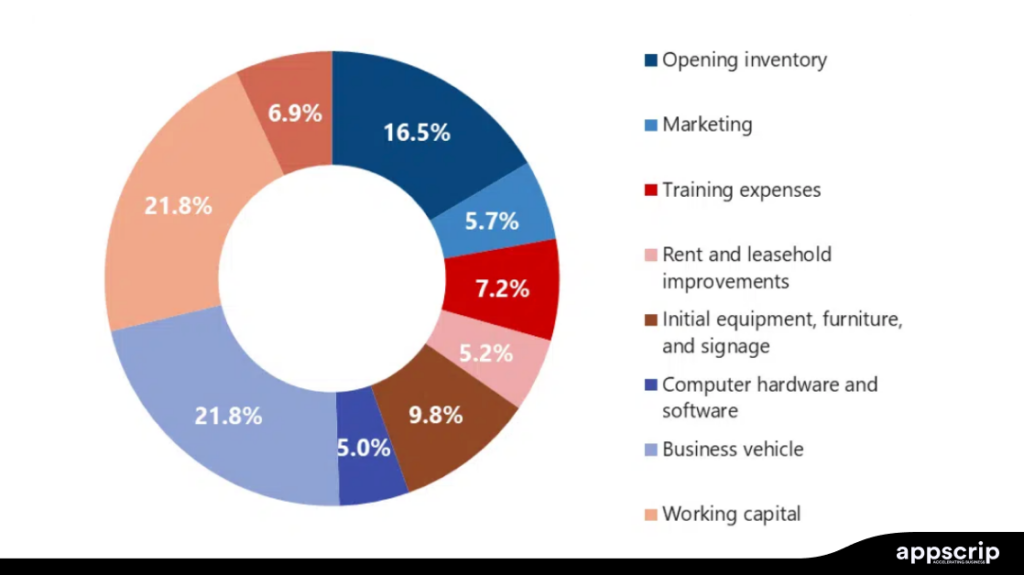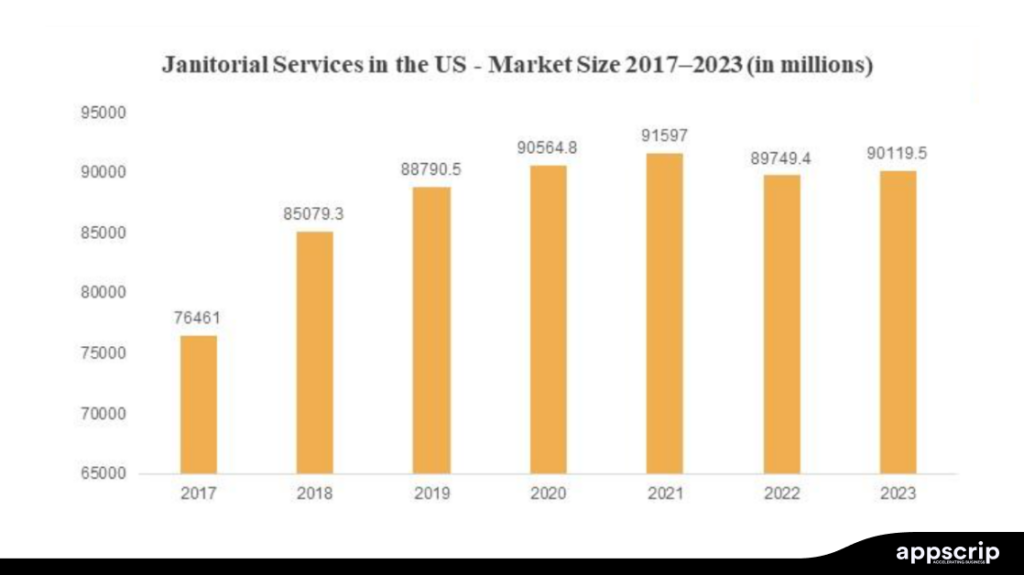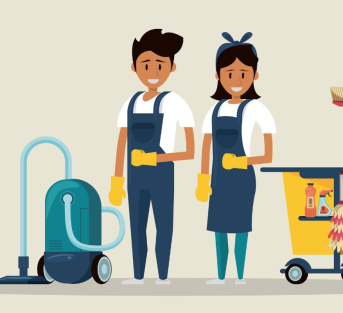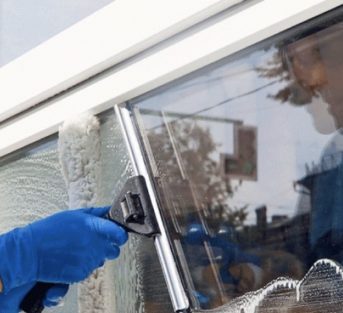A business plan is vital for entrepreneurs and businesses as it provides a roadmap for success and growth. A well-laid out business plan turns your ideas into reality. It heads you in the right direction, marks your milestones, and resolves issues you have foreseen.
A cleaning business you launch can turn out to be profitable and successful. But it demands proper planning and implementation so that it satisfies the demands of professional cleaning services in both residential and commercial sectors.
A plan helps us anticipate and prepare for the future. It allows us to set goals, make proper decisions, and take steps to achieve desired results. And finally don’t forget technology. Using technology is not an option, but a need in this tech-dependent world.
When your cleaning business grows, a mobile app becomes an invaluable tool to enhance operational efficiency, refine processes, reduce manual effort, and cater to a technologically competent customer base, ensuring a competitive advantage.
Managing a business can be overwhelming without the right resources. With technology on your side, you get a head start. This is where Appscrip comes in. Appscrip’s pre-built cleaning services software comes with features that can handle scheduling, customer interactions, payments and more, while you can focus on delivering customer satisfying services.
Want to know more, let’s connect.
TL;DR – Cleaning Company Business Plan
- Identify your cleaning niche
- Develop a detailed business plan
- Choose a suitable business structure
- Register your business and obtain necessary licenses / permits.
- Create a startup budget covering equipment, supplies, and marketing.
- Build a strong brand with a name, logo, and tagline.
- Create an USP and Customise your services.
- Use Effective Marketing Strategies, Including a Mobile Application.
- Hire and train staff to deliver high-quality services.
- Monitor performance, gather customer feedback to improve.
What Do You Need to Start a Cleaning Business?
To start a cleaning business you will need a legal registration, necessary licenses and permits, business insurance, cleaning equipment and supplies, marketing strategy, and be aware of local cleaning regulations. More in detail below:
Legal and Administrative:
Business Name: Get an apt business name for your venture.
Registration: Register with the appropriate agencies.
Licenses and Permits: Source necessary licenses and permits depending on your location and services.
Tax ID: This is to comply with tax regulations.
Financial:
· Business Plan: In here outline your services, target market, pricing, and financial projections.
· Startup Capital: This is to cover initial costs like equipment, supplies, insurance, marketing, and legal fees.
· Bank Account: A business bank account will have its benefits.
Insurance:
· Liability Insurance: Insurance is to protect you from lawsuits related to accidents or damages during work.
Operational:
· Cleaning Equipment and Supplies: Invest in good quality cleaning equipment and supplies.
· Cleaning Procedures: Develop SOPs to ensure consistency and quality.
· Transportation: A reliable vehicle for transporting supplies and staff.
· Pricing Structure: Competitive pricing based on services offered and market conditions.
· Contracts & Agreements: Create clear, professional contracts for recurring or one-time services.
Marketing and Customer Acquisition:
· Marketing Strategy: Create a marketing plan to reach your target audience through channels like online advertising, social media, posters, UGC and referrals.
· Branding: Develop a brand identity for your business. Come up with a logo, a slogan, colour palette, typography, and other visual assets.
· Customer Service: Customer service helps build positive relationships and repeat business.

Split of the services available for the cleaning industry
How to Identify Your Target Market
Your target market is a group of people or businesses you’re reaching out to with your products or services. Target markets are identified based on demographics, geographics, psychographics, and behaviour. Demographics define a customer, while psychographics attempt to fathom their behaviour.
To identify your target market, analyse your customer base, define your services, conduct market research, analyse the competition and create an ICP.
By knowing your ICP, as you can understand their wants, needs and how best to cater to them.
Here are the key steps on how to identify your target market:
Key Steps to Identify Your Target Market
1. Analyse Your Customer Base
Examine your customer base so as to identify patterns and similarities among them. Consider factors such as location, financial background, services availed, preferences, frequency of service, ratings, reviews, and repeat customers.
Understanding why your existing customers choose you can identify your strengths, refine your focus and reveal newer opportunities.
2. Define Your Product/Service Value
Define clearly the core value your service provides so that customers identify with it. What problems does it solve? Who would benefit the most from your services?
By understanding the specific solutions that your business provides, you can narrow down the audience who are most likely to choose you.
3. Conduct Market Research
Engage in surveys, focus groups, and interviews to gather further information about market trends and customer expectations.
You can also use research material such as industry reports and competitor studies to gather further information. This will help you substantiate your findings and identify potential gaps in the market.
4. Demographic Segmentation
Divide your audience based on demographics like age, gender, income, education, occupation, and family size. Such segmentation creates a lucid picture of your customer base. You can now fathom their wants, needs and requirements when it comes to cleaning. And how much are they willing to invest in such services.
Now you can carry out specific marketing strategies that will have a positive effect with specific groups.
5. Geographic Segmentation
Getting to know where the chunk of your customers are present is vital. This will help you understand the reasons as to why they are availing your services. Are they concentrated in certain regions, specific cities, counties, or countries?
Understanding their geographic spread helps you to be ready with transportation, preferences, and needs as per climatic conditions. This can even help you come up with an USP to target such regions.
6. Psychographic Segmentation
The more information you have the more informed you will be. Get to the intricate details of your customers, like their interests, values, and lifestyles. Knowing their hobbies, personality traits, attitudes, and buying motivations can help you refine you offerings.
Such information can provide a deeper understanding of your audience’s decision-making process. And it can help you come up with personalised marketing messages.
7. Competitor Analysis
Know your competitors, this is among the best strategies to adopt. This is because they too put in a lot of effort to be successful. Find out who your competitors are targeting, the strategies they use and how they’re positioning themselves in the market.
Identify overlaps and gaps in their strategies, so as to differentiate your offerings. Understanding the strengths and weaknesses of the competition can help you create a unique niche for yourself.
8. Create Buyer Personas
Develop ideal customer profiles, which include demographics, pain points, buying habits, and online behaviour.
For example, an ideal customer profile could be “Working Mom Donna, aged 37, looks for time-saving solutions, prefers online shopping, and is known to support eco-friendly groups.” Now you have a buyer persona and can strategize on how to market to such a group.
9. Utilise Data Analytics
Gather as much data, because by sifting them you will gain a host of inputs. Use tools like Google Analytics, social media insights, and CRM software. With this analyse your audience, engagement patterns, and conversion.
This information can identify high-performing groups and help you optimize your marketing strategies.
10. Test and Refine Your Target Market
Identify your target market at a regular frequency. With the information deduced, fine-tune your campaigns and adapt your strategies to the trends in the market.
These steps will help you fathom your audience and develop a comprehensive understanding of your target market. This will help you connect with the right audience and maximise your impact.

Split of investment needed in each vertical
10 Steps To Write The Ultimate Cleaning Company Business Plan
1. Identify Your Cleaning Niche (e.g., Residential, Commercial, or Specialized Cleaning)
Know your strengths, this will help you decide what services you should offer. There are diverse opportunities in the cleaning industry, take your pick, create a niche for yourself, work hard, and reap success.
- Residential Cleaning: Homeowners, renters and agencies will be your regular clients. It could be a one-time affair or a frequent requirement.
- Commercial Cleaning: Businesses, offices, or retail spaces are more lucrative options, be very circumspect in your services and you will be in for a long run with them.
- Specialized Cleaning: Specialised services could be a once-in-a-while thing, but you can quote high. Services such as post-construction cleanup, eco-friendly cleaning, or industrial cleaning can be grouped here.
Choose a niche you are confident about, and try personalising your offerings to fit in as many clients. Even conduct marketing efforts to meet the unique needs of your target clients.
2. Develop a Detailed Business Plan with a Clear Vision and Goals
A business plan is just the roadmap that can guide you to success. Your success hinges on a business plan in a big way, get it right. Include the following in your plan:
- Vision and Mission: A vision and mission are statements you can refer to regularly to know if you are headed in the right direction. These define your purpose and long-term goals.
- Market Analysis: Research your competitors and target audience.
- Services Offered: List the specific cleaning services you will provide.
- Financial Projections: Include startup costs, pricing strategy, and expected revenue.
- Marketing Plan: Outline strategies to promote your services.
A clear business plan not only helps in execution but can attract investment.
3. Choose a Suitable Business Structure (Sole Proprietorship, LLC, etc.)
Select the right legal structure, as it impacts your taxes, liability, and operations. Available options include:
- Sole Proprietorship: Easy to set up but offers no liability protection.
- Limited Liability Company (LLC): Provides liability protection while maintaining operational flexibility.
- Corporation: Suitable for larger businesses with multiple shareholders.
Consult a legal expert or accountant to choose the structure that best suits your needs and future goals.
4. Register Your Business and Obtain Necessary Licenses and Permits
Legal compliance is the backbone to operate your cleaning business legitimately. Steps include:
- Register your business with local / state authorities.
- Make sure to get licenses or permits in your area of operation.
- Mishaps are not in your control, so be ready for such episodes, secure liability insurance to protect your business and clients.
This step is to ensure your business operates legally and clients trust you for being compliant to regulations.
5. Create a Startup Budget Covering Equipment, Supplies, and Marketing
Plan your finances efficiently so that you can kick off smoothly. Include costs such as:
- Cleaning Supplies and Equipment: Tools are vital to your success but they are also resource-intensive. But it’s advisable to invest in high-quality products like vacuum cleaners, mops, and eco-friendly cleaning products.
- Marketing: As you scale go on to invest in website development, in a mobile application, advertising, and promotional materials. Prioritize the integration of web development services to stay competitive.
- Insurance and Legal Fees: This is to cover initial costs for permits and insurance policies.
Budgeting helps you manage expenses and avoid overspending early on.
6. Build a Strong Brand with a Memorable Name, Logo, and Tagline
Build a strong brand, it will help you in the long run. Businesses and customers will recognise your brand when you take care of the basics. This will influence customer perception.
- Business Name: Choose a name that reflects your services and professionalism.
- Logo: Design a clean and simple logo to make your brand recognizable.
- Tagline: Come up with a catchy phrase to convey your UVP (e.g., “Create A New Outlook”).
A strong brand builds trust and credibility. It will make your marketing more effective.
7. Create an USP and Customise Services
Your target audience is your bread and butter, how you can satisfy them will gear you for success. So customize your offerings accordingly.
- Conduct surveys or interviews to know your customers’ pain points.
- Focus on finding solutions in house cleaning services or commercial cleaning services like deep cleaning or eco-friendly options to rope in more clients.
- Offer flexible pricing and packages to cater to different budgets.
Meeting your audience’s needs ensures customer satisfaction and repeat business.
8. Use Effective Marketing Strategies, Including a Mobile Application:
Marketing can do wonders to your cleaning business, using a combination of traditional and digital options. Digital advertising on social media platforms and search engines helps reach a wider audience. And referrals from satisfied clients get more customers.
A dedicated mobile application to scale your business operations and improve customer experience will help you to scale and automate many functions. A mobile app offers multiple benefits:
- Convenience: Customers can book services, choose cleaning schedules, and make payments directly through the app.
- Personalization: The app can suggest customized services based on user preferences and service history.
- Automation: Automate booking confirmations, reminders, and feedback collection to save time and enhance efficiency.
- Loyalty Programs: Incorporate rewards or discounts for repeat customers.
As your business grows, a mobile app becomes invaluable to simplify processes, reduce manual work, and cater to the tech-savvy, ensuring a competitive edge.
9. Hire and Train Staff to Deliver High-Quality, Consistent Services
Reliable and skilled employees can build you a huge reputation. Hiring and training can enhance labour costs but it promises good returns.
- Recruitment: Hire individuals who pay attention to detail and have good work ethics.
- Training: Provide training on a regular basis on cleaning techniques, customer interaction, and safety protocols. Make sure to comply to such regulations.
- Employee Retention: Labour intensive industries suffer from hiring skilled staff. Hence offer competitive pay, benefits, and incentives to retain staff. This could add to overhead costs, but is worth every penny.
Quality service ensures customer satisfaction and grows your reputation.
10. Monitor Performance and Gather Customer Feedback to Improve
Keep an eye on your performance, as it will guide you on how to go forward. Continuous monitoring and improvement are essential for long-term success.
- Track Key Metrics: Monitor customer satisfaction, employee performance, and service efficiency.
- Collect Feedback: Use surveys or online reviews to understand areas for improvement.
- Adapt and Evolve: Change is continuous. Implement changes based on feedback and watch industry trends.
Good feedback helps, listen to your customers and you will get many ideas. Refine your services and stay competitive.
By following these steps, you create a perfect start and will be ready for the future. A strong foundation will position you for sustained growth and profitability.
Best Advertising Methods for Cleaning Services
When you advertise, you reach new customers, drive sales, differentiate your services, build customer loyalty, increase brand awareness, and contribute to growth. It builds a strong market presence and promotes your USP.
Effective advertising helps attract and retain customers. Use strategies such as:
- Digital Marketing: 51% people start searching for a new service using a search engine. Hence launching a website is a good idea. Optimize your website for local SEO, and use social media profiles to garner further clientele.
- Google My Business: Google my business is an amazing resource to validate organisations. List your company on Google to appear in local search results and gain credibility.
- Word of Mouth: Encourage user generated content so that satisfied customers may refer your services to others.
- Flyers and Brochures: Posters, flyers and brochures are long term advertising material. Distributing or affixing them in public spaces, residential areas or commercial districts is a good idea.
- Partnerships: After you have located your target market. Collaborate with them to get more clients. Property managers, real estate agents, or local businesses can provide the much needed referrals.
- Customer Reviews: Testimonials are a gold mine to organisations. Especially if the client is well-known. Post these online to build trust with potential clients.
- Paid Ads: Remember you always have the option to run paid ads. These are when leads are low and the market may be saturated. Run targeted ads on platforms like Google Ads or Facebook to reach out to your audience.
These strategies will get you organisation moving in the right direction as the service industry depends on effective advertising for continued success.

Janitorial services market size in the US over the years
What are Effective Strategies for Pricing Cleaning Services?
Pricing strategy plays a vital role in your success. If you are prices are too high, you may lose clients, but keeping them low can create doubts in clients minds regarding the quality you offer. And you could also be cutting your profits.
Pricing strategically is essential to attract clients while ensuring a healthy bottom line. Here are the most effective strategies to set your rates:
1. Market Research:
- The first step is to analyse the competition pricing model. Your competitors’ strategy helps understand standard rates.
- Identify services you are good at, which you can afford to offer at lower prices and capture the market for such services.
2. Understand Your Costs:
- You can deduce your break-even when you can get your cost figured correctly. For this take all heads like operational costs, labour costs, overheads costs if any, supplies, transportation, and insurance into account – which will add up to your cost.
- Also factor in fixed costs (equipment) and variable costs (cleaning supplies).
3. Choose a Pricing Model:
- Hourly Rate: This is the most ideal model when you are unsure of the timelines. The work would depend from project to project: like deep cleaning or post-construction cleanup.
- Flat Rate: This pricing is best suited when you aware of the job and time involved. You could also use this for recurring or one-time cleaning tasks.
- Square Footage Rate: This could be applied when the job to be done is on the higher side and usually applied for commercial cleaning.
4. Account for Special Services:
- Special services can be charged higher because it usually takes more time and effort. You would also need a different skill-set, equipment and supplies. This can include services such as deep cleaning, carpet cleaning, or using eco-friendly products.
- There would be occasions when customisation in pricing is asked for. This can be accorded to clients with unique needs.
5. Offer Tiered Pricing:
- Create basic, standard, and premium packages to cater to various budgets.
- Highlight the value that is on offer at each tier to encourage upselling.
6. Consider Your Target Market:
- For residential clients, ensure costs are not too high and be clear regarding services offered.
- For commercial clients, focus on timelines, quality of work, safety and reliability.
7. Provide Free Estimates:
- Offer on-site or virtual assessments. This will show you professionalism. You too can understand the scope of work before quoting a price.
8. Incorporate Seasonal or Promotional Discounts:
- Attract new clients or retain existing ones by offering necessary discounts. You could also gift your clients for certain occasions.
9. Set a Minimum Service Fee:
- You should also have a cap on your minimum fee. Avoid unprofitable jobs and establish a baseline fee taking your costing into consideration.
10. Review and Adjust Regularly:
- Monitor your profits and market conditions to adjust your rates periodically.
Steps to Implement Your Cleaning Business Strategy
Once you have drawn a plan with a lot of thought being put into it, comes the implementation. The execution of your business strategy ensures your cleaning company operates efficiently and your growth is guaranteed. Follow these steps:
1. Set Clear Goals:
- Setting clear, end result expectations are imperative. SMART in goal setting stands for Specific, Measurable, Achievable, Relevant, and Time-bound. Define SMART objectives for your business.
2. Develop an Action Plan:
- Not all plans are easy and lucid to understand. It is here we have to break down our strategy into actionable steps. With small steps that are clear and to the point, execution will be easy.
- Action plans could be launching specific marketing campaigns, onboarding staff, and acquiring equipment.
3. Streamline Operations:
- Use technology for managing bookings, payments, and client communication or any other repetitive tasks. Use scheduling and invoicing software for ease of operations.
- Come up with SOPs, train your staff, create hard copies, and implement them. This will add to your professionalism and clients can identify your commitment to work.
4. Build a Strong Team:
- Recruit skilled employees and provide necessary training. Ideally the staff should be trained on cleaning techniques, customer service, and safety practices.
5. Focus on Customer Experience:
- Prioritize client satisfaction by delivering high-quality services. Be sure to value timelines, be professional on how you deal with clients and address all feedbacks without delay.
6. Ensure Marketing Activities:
- Launch campaigns on social media, Google Ads, and email to reach out to potential clients.
- Testimonials and case studies are trusted by users. It helps build trust and proves you know the work you are doing.
7. Monitor Key Performance Indicators (KPIs):
- Knowing where you stand is vital to progress. Therefore track metrics like customer retention, service ratings, and revenue growth to gather valuable information and assess progress.
8. Adapt to Feedback and Market Trends:
- Sift through customer feedback and you can find actionable insights. With this you can refine your services and get new ideas on areas for improvement.
- Stay abreast with industry trends and developments. Incorporate new techniques or technologies that have come to the forefront through others tryst with technology.
9. Evaluate Financial Performance:
- Use professional help or necessary software to know where your finances stand. Review your income, expenses, and profit margins regularly to know of your financial condition.
10. Scale Your Business:
- If you don’t expand you will stagnate. Offering something new will have takers and keep you in the race. Even if it is the same product wrapped differently. Expand your offerings or enter new markets based on demand and available resources.
- Partnerships or franchising are proven ways to grow you brand. Look for such opportunities.
By following these steps, you can efficiently implement your cleaning business strategy and look to achieve long-term success.
What Are the Key Trends in the Cleaning Industry?
The cleaning industry is developing at a quick pace with the economy showing healthier bottom-lines. And changes are driven by key advancements in technology, changing consumer expectations, and by giving priority to environmental concerns.
Here are some key trends shaping the industry:
1. Green Cleaning Practices:
With lots of importance being given to environmental concerns, consumers prefer eco-friendly solutions to leave a better world to their progeny. Businesses are adopting sustainable cleaning products, biodegradable materials, and energy-efficient equipment to reduce their carbon footprint.
2. Technology Integration:
Digital tools like mobile apps and cleaning service management software streamline operations, from booking and scheduling to invoicing and customer communication. Automation in cleaning, such as robotic vacuums and smart devices, are also gaining popularity due to the convenience they offer.
3. Specialised Cleaning Services:
There will always be demand for specialised or niche services, such as medical facility sanitation, post-construction cleaning, and COVID-19 disinfection. A one size fits all remedy has seen its demise long ago. Businesses offering tailored solutions to meet the needs of the clientele can end up with some lucrative deals and will have the proverbial competitive edge.
4. Increased Focus on Hygiene and Health:
Hygiene and sanitisation have gained prominence in the aftermath of the COVID-19 pandemic. Now businesses and households give the much needed importance to regular cleaning. This has led to increased demand for professional cleaning services both in the residential and commercial sectors.
5. Subscription-Based Models:
Commercial establishments and public spaces where the general populace converge, authorities now take the initiative to keep such places spik and span for the advantages it presents. Thus cleaning companies have begun to offer subscription packages for frequent cleaning services. This ensures customers with convenience and businesses with predictable revenue streams.
Frequently Asked Questions (FAQs)
What Are the Key Overhead Costs for a Cleaning Business?
Key overhead costs include employee wages, cleaning supplies, equipment maintenance, insurance, licensing fees, marketing expenses, and office space (if applicable). Managing these costs effectively is imperative to ensure profitability.
How Can You Accurately Estimate Labor Costs?
To estimate labour costs:
- Calculate the average time required to complete specific cleaning tasks.
- Determine hourly wages, including taxes and benefits.
- Factor in travel time and the number of employees needed for each job.
This approach ensures competitive pricing while maintaining profitability.
How Can You Minimize Overhead Costs for a Cleaning Company?
Minimizing overhead costs involves:
- Investing in durable, high-quality equipment to ensure long term repair-free usage.
- Beating out good deals or bulk purchasing supplies.
- Utilizing technology like cleaning management software to streamline functions like scheduling, payroll, and invoicing.
- Looking for energy efficiency options to cut waste in operations.
What Tools and Equipment Do You Need to Start a Cleaning Business?
Basic tools needed for a cleaning enterprise include:
- Cleaning solutions (general-purpose, glass, and disinfectants).
- Microfiber cloths, sponges, and mops.
- Vacuum cleaners and floor polishers.
- Safety gear, such as gloves and masks.
- Specialized equipment for niche services
Conclusion: Cleaning Company Business Plan
A successful cleaning business is a culmination of careful planning and keeping up with the trends that govern the cleaning industry. This not only helps you to stay competitive, but will lead to success. Whether to use or not to use technology is no longer an option, but it is key for enhancing efficiency, scaling operations, and ensuring customer satisfaction.
This is where Appscrip’s Cleaning Services Software can turn into your worthy business partner. Designed for entrepreneurs and businesses, it offers features such as online booking, real-time tracking, automated scheduling, and secure payments.
By adopting innovative tools like Appscrip’s software and keeping up with the latest innovations, you can build a professional and successful cleaning business that will thrive in today’s scenario.





